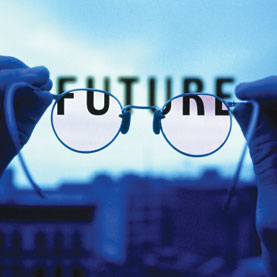Creativity in organizations. Possible? Give me a break. Okay, maybe for the bold.
Three behavioral scenarios impact today’s workers. Do you feel that under these conditions people can easily generate new ideas, make new decisions and take new actions that make a difference? Is it safe for them to venture beyond where they are now, with antecedent learning weighing upon them influencing belief that the future will be as dull as today is, only worse? Give me a break.
1. Low employee engagement survey scores.
Employees have good intentions going into work, only to have them sour with disappointment because their needs aren’t being met (see Fast Company’s Gallup’s Workplace Jedi On How To Fix Our Employee Engagement Problem). Estimates from the Gallup report on Employee Engagement say actively disengaged employees cost the U.S. between $450 billion to $550 billion each year in lost productivity. They also say that less engaged employees are more likely to steal from their companies, negatively influence coworkers, miss workdays, and drive customers away. Makes me wonder…In what ways might employee disengagement influence innovation and the use of creative thinking methods to drive new growth in organizations?
2. Student learning is based on a dominant model of public education fundamentally rooted in the industrial revolution that spawned it, when workplaces valued punctuality, regularity, attention, and silence above all else. Today’s MOOC’s are little different.
Not conversation and not engagement (see Wired’s How a Radical New Teaching Method Could Unleash a Generation of Geniuses). Learning scientists have known for decades that getting students to talk to each other, while they are learning, results in better learning. (Sawyer, R. K. (2006). The Cambridge Handbook of the Learning Sciences. Cambridge University Press.)
3. Over the years, students learn to drop their eyes when a teacher, and later their boss, asks a question.
Adults are accustomed to playing intellectual-hide-and-seek, a game they learned in school when teachers respond to questions in ways that diminish and punish original thinking, curiosity, and playfulness (see this blog Intellectual Hide-and-Seek Taught in Schools).
Even though creativityland inc leads/facilitates a variety of programs that inspire new thinking and new actions, systems in organizations that evolved to sabotage new insights exist.
There are ways to overcome these hurdles, and there are paths that beckon the bold, those who are willing to explore and (possibly) take on a bruise or two as consequences of being different.
Are you bold? What are ways you open the doors for new thinking that show you mean it?
Marci Segal, MS
Freeing leaders’ thinking so they can create new futures.



RT @MadCreative: Is Creativity Really Possible in Organizations? http://t.co/JhmFxMV5pa via @sharethis #Creativity #Ideas #Education #Cultu…
Creativity in Organizations? Maybe for the Bold. http://t.co/mbpqZFXs5F via @sharethis #Creativity #Ideas #Education #Culture #CCO